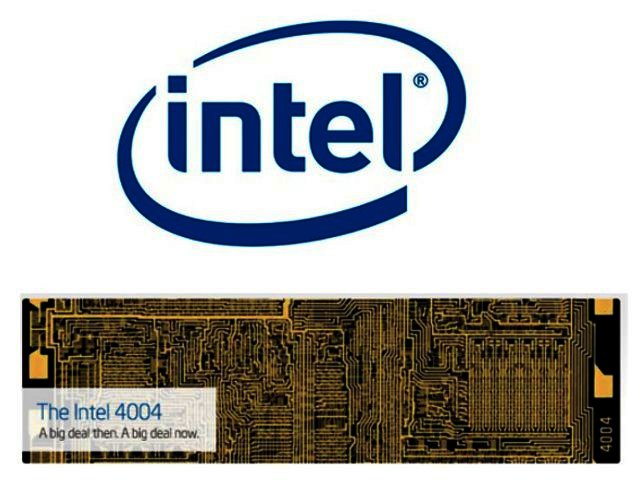PREVIOUS ARTICLENEXT ARTICLE
NEWS

Intel celebrates 40 years of digital revolution
By Staff Writer 17 November 2011 | Categories: news
On 15 November, 40 years ago, Intel introduced the world’s first commercially available microprocessor, the Intel 4004 (video posted below). This triggering the start of the digital revolution. The company stated that while most people have never seen a microprocessor, devices that contain them have become so integrated into daily life that they have become virtually indispensable.
Microprocessors are the ‘brains’ inside computers, tablets, servers, mobile phones, cars, cameras, refrigerators, radios, TVs and many other household and enterprise devices. Intel said that the proliferation of microprocessors is due in large part to its pursuit of Moore’s Law, a forecast for the pace of silicon technology development. It states that roughly every two years transistor density of semiconductors will double, while increasing functionality and performance as well as decreasing costs. This law has become the basic business model for the semiconductor industry for over 40 years, according to the company.
For example, compared to the Intel 4004, today’s 2nd generation Intel Core processors deliver more than 350 000 times the performance, with each transistor utilising approximately 5000 times less energy. In this same time period, the price of a transistor has dropped by a factor of about 50 000.
Future microprocessors developed on Intel’s next-generation 22 nm manufacturing process are due in systems in 2012 and will deliver even better energy-efficient performance, as a result of the company’s 3-D Tri-Gate transistors that make use of a new structure.
“The sheer number of advances in the next 40 years will equal or surpass all of the innovative activity that has taken place over the last 10 000 years of human history,” said Justin Rattner, Intel chief technology officer.
According to Intel such advances in chip technology are paving the way for an age when computing systems will be aware of what is happening around them and anticipate people’s needs. This capability is poised to fundamentally change the nature of how people interact with and relate to information devices as well as the services which these devices provide.
Intel stated that future context-aware devices ranging from PCs and smartphones through to automobiles and TVs, will be able to advise people and guide them through their day in a manner more like a personal assistant than a traditional computer.
Reflections and Predictions: The Impact of the Microprocessor
To celebrate the past 40 years of microprocessor innovation and look ahead at the next 40 years, Intel compiled photos, video interviews, opinion pieces and a number of info graphics and other materials with insight from Intel and industry executives, analysts, futurists and engineers. To view all of these materials, you can visit its website.
In related news Intel recently explained that users shouldn’t write off the PC just yet, as the personal computer market remains strong and healthy, in spite of massive growth in the tablet PC and smartphone sectors.
Microprocessors are the ‘brains’ inside computers, tablets, servers, mobile phones, cars, cameras, refrigerators, radios, TVs and many other household and enterprise devices. Intel said that the proliferation of microprocessors is due in large part to its pursuit of Moore’s Law, a forecast for the pace of silicon technology development. It states that roughly every two years transistor density of semiconductors will double, while increasing functionality and performance as well as decreasing costs. This law has become the basic business model for the semiconductor industry for over 40 years, according to the company.
For example, compared to the Intel 4004, today’s 2nd generation Intel Core processors deliver more than 350 000 times the performance, with each transistor utilising approximately 5000 times less energy. In this same time period, the price of a transistor has dropped by a factor of about 50 000.
Future microprocessors developed on Intel’s next-generation 22 nm manufacturing process are due in systems in 2012 and will deliver even better energy-efficient performance, as a result of the company’s 3-D Tri-Gate transistors that make use of a new structure.
“The sheer number of advances in the next 40 years will equal or surpass all of the innovative activity that has taken place over the last 10 000 years of human history,” said Justin Rattner, Intel chief technology officer.
According to Intel such advances in chip technology are paving the way for an age when computing systems will be aware of what is happening around them and anticipate people’s needs. This capability is poised to fundamentally change the nature of how people interact with and relate to information devices as well as the services which these devices provide.
Intel stated that future context-aware devices ranging from PCs and smartphones through to automobiles and TVs, will be able to advise people and guide them through their day in a manner more like a personal assistant than a traditional computer.
Reflections and Predictions: The Impact of the Microprocessor
To celebrate the past 40 years of microprocessor innovation and look ahead at the next 40 years, Intel compiled photos, video interviews, opinion pieces and a number of info graphics and other materials with insight from Intel and industry executives, analysts, futurists and engineers. To view all of these materials, you can visit its website.
In related news Intel recently explained that users shouldn’t write off the PC just yet, as the personal computer market remains strong and healthy, in spite of massive growth in the tablet PC and smartphone sectors.
USER COMMENTS
Most Read Articles
Read

Magazine Online
TechSmart.co.za is South Africa's leading magazine for tech product reviews, tech news, videos, tech specs and gadgets.
Start reading now >
Download latest issue
Have Your Say
What new tech or developments are you most anticipating this year?
New smartphone announcements (45 votes)
Technological breakthroughs (29 votes)
Launch of new consoles, or notebooks (14 votes)
Innovative Artificial Intelligence solutions (29 votes)
Biotechnology or medical advancements (24 votes)
Better business applications (160 votes)



